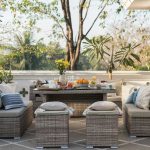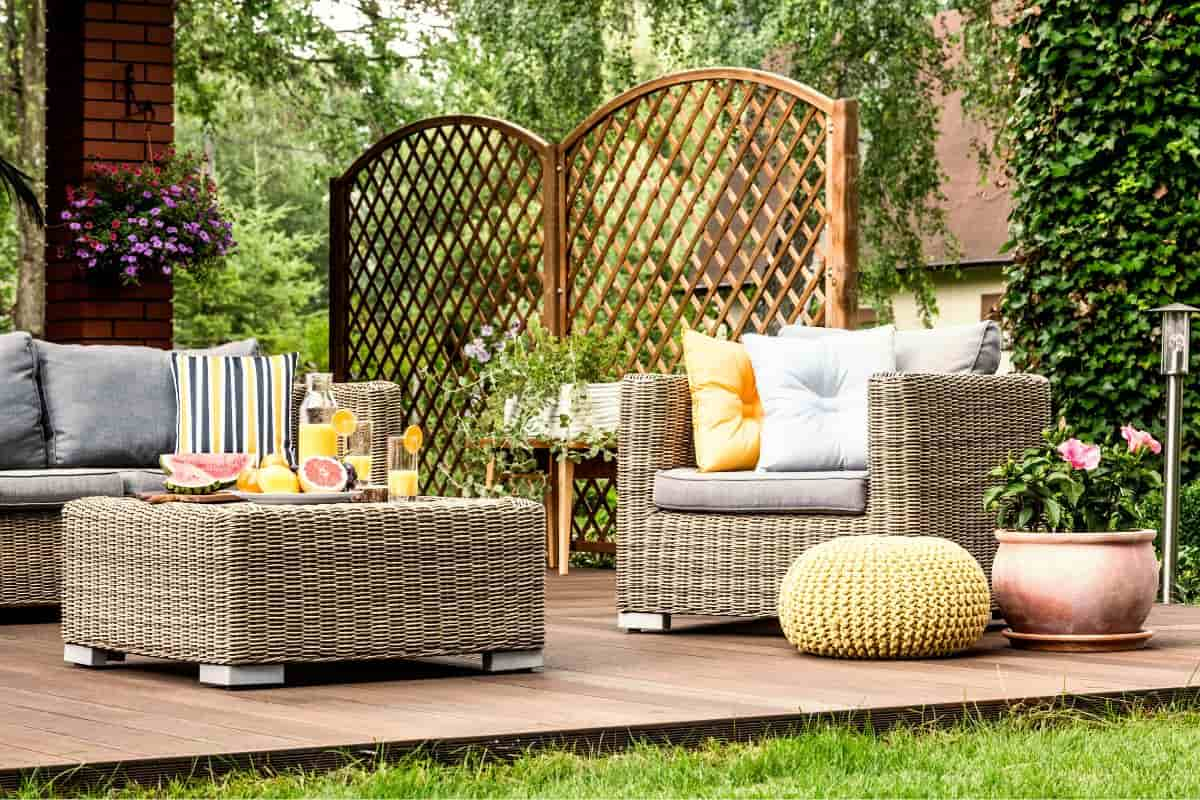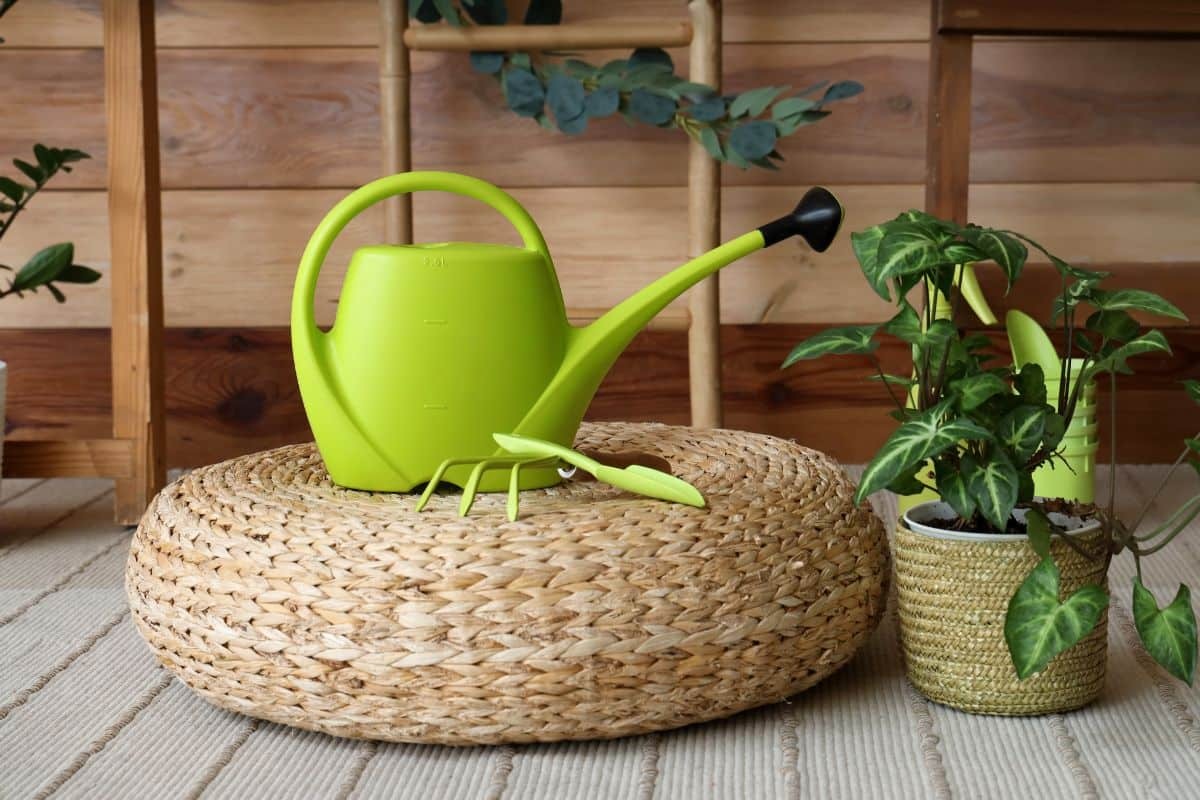



Outdoor poufs have become a popular choice for gardens and terraces thanks to their versatility, comfort and lightness. Their design allows them to be adapted to different spaces, creating areas for relaxation, reading, socialising or even play for children or pets.
But do you know what a pouf is and where it comes from? In this post, we’ll tell you all about it, as well as the different types of poufs available, the advantages of using them and the various ways you can use this piece of furniture in your garden.
Tabla de contenidos
ToggleFirst, let’s look at what the word pouf means. It is a low, lightweight and usually padded seat, without a backrest or armrests, characterised by its versatility and comfort. Its design allows it to be adapted to different spaces within the home, from the living room to the garden, and today it has become a decorative as well as functional piece of furniture.
Although some simple pouffes are made of plastic, many others are padded or have cushions, making them a piece of furniture that easily adapts to the body, perfect for relaxing.
The origin of the pouf dates back to Arab tradition, as in areas such as the Middle East and the Maghreb, this type of seating was used for resting, eating and socialising in comfort. Even at that time, pouffes had a dual practical and ornamental function, as their flexibility made them very adaptable to the body, but they also formed part of the room’s decoration.
Around the 18th century, the concept of the pouffe arrived in Europe from Turkey, which is why this type of furniture is sometimes also known as an ottoman. In France, during the reign of Louis XV, upholstered and rounded versions of this piece were incorporated into aristocratic salons, where they were used as seating and decorative furniture.
Over time, the use of pouffes became more widespread and, although they were already common in homes in the 19th century, it was not until the 20th century that they reached their peak thanks to their contemporary, versatile and functional design. Today, they remain a popular choice for all kinds of indoor and outdoor spaces, with a wide variety of models available in different materials and colours.
Now that you know what a pouf is, you should also know that there are different types of pouffes, each designed to suit different spaces and decorative styles. Here are the main ones:



If you are considering buying one or more pouffes for your home, you should know that they are a very versatile option that combines comfort and style. Here are the main advantages of poufs:
Finally, poufs are very popular outdoor furniture items due to their versatility, lightness and variety of designs, which easily adapt to all kinds of outdoor spaces. Let’s see how you can use a pouf on your terrace or in your garden:
If you’re wondering how to create a reading corner in your garden, a pouf placed in a quiet area can become the perfect retreat for reading outdoors. Combined with a light blanket and cushions, it will provide a cosy space, ideal for enjoying a good book surrounded by nature.
Another way to use poufs is to create a seating area in the garden, perfect for gatherings with family and friends. As they are lightweight, you can rearrange them according to the number of guests, creating comfortable and dynamic conversation circles.
Placing several poufs in a sunny or shaded corner is ideal for creating an area for listening to music, sunbathing or simply relaxing. In this case, it is best to opt for beanbags with soft seats to be as comfortable as possible.
You may just want to use your beanbag as a decorative element, as they are available in different colours and textures and add a lot of dynamism to the garden. They can be combined with plant pots, pictures or outdoor rugs, blending in perfectly with the décor of the space.

Outdoor beanbags can be placed around a low table to create a relaxed and casual dining area. They are comfortable and easy to move, making them ideal for impromptu picnics or barbecues, adding a carefree touch to any gathering in the garden.
The lighter and softer models are ideal for little ones to play, read or rest. You can place a designer storage chest next to them so that children can store their toys and have them handy when they want to use them.
For the more spiritual, placing a beanbag in a quiet corner of the garden allows you to create a meditation or relaxation area. Their comfort facilitates outdoor breathing, yoga or mindfulness sessions, ideal for enjoying a natural environment.
Finally, outdoor poufs can also serve as a resting area for your pets. Dogs and cats can lie comfortably on them while you enjoy the garden, providing your animals with a pleasant place to rest.